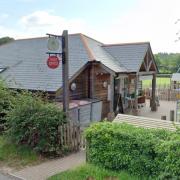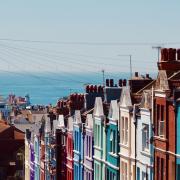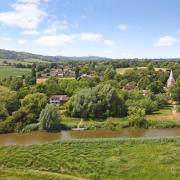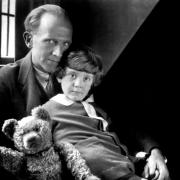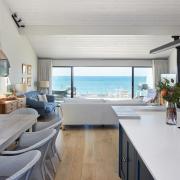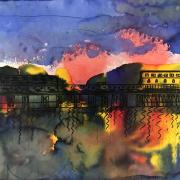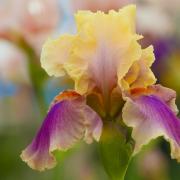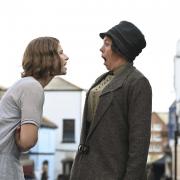Lamb House, in the Sussex coastal town of Rye, was the home of the transatlantic literary genius, Henry James. The author of The Portrait of a Lady and many more
short stories and novels, James discovered his ‘indispensable retreat’ in the summer of 1897 and lived there for the rest of his life.
A New Yorker by birth, James had been settled in England for the previous 20 years. His work had marked him out as a brilliant chronicler of what happens when European and American cultures collide, and he was living a literary life in London.
He already knew the Cinque Port town of Rye, perched high above its harbour and the shingle flats that stretch to the English Channel, because he had rented the vicarage there for summer holidays. But when he discovered a red-brick, Georgian house, with a walled garden, he was smitten. He stood in the street and made ‘sheep’s eyes’ at Lamb House (named after the family who built it) but feared it would never be his. Fate, it seemed, was on his side.
When the owner died suddenly, James was able to lease Lamb House, and then buy it outright in 1899. He loved it immediately, and it appeared as Mr Longdon’s home in his next novel, The Awkward Age.
Lamb House fulfilled all James’s wishes for a refuge from his life in London, where he had been hurt by the critical failure of one of his plays in the notoriously savage theatre world. He intended to live at Lamb House from May to October. It was, in fact, the Garden Room (now gone – it was hit by a bomb in 1940) that first attracted James.
He had seen a watercolour by his friend, the architect Edward Warren, of a red-brick edifice built into the garden wall, its bay window leaning out over the street and a little green garden door beneath. This room became his writing room, where he would work every morning, walking up and down dictating to his secretary (increasing rheumatism meant that he could not write longhand anymore).
He called the room ‘The Temple of the Muse’, and so it proved. From Lamb House, he produced three of his greatest novels: The Wings of the Dove, The Ambassadors and The Golden Bowl. During that period, a circle of writing friends had also settled in the Sussex countryside, including HG Wells, Joseph Conrad and Rudyard Kipling, and to this group, as to the wider world, James became known as ‘The Master’.
With regards to the garden, however, ‘The Master’ knew his limitations. In 1898, just after acquiring Lamb House, he admitted that he could hardly tell a dahlia from a mignonette, and he immediately sought the advice of artist and designer Alfred Parsons. He had already made a name for himself producing accomplished landscape and garden paintings (including of the gardens of plantswoman Ellen Willmott, as well as a series of 132 illustrations for her book The Genus Rosa) but had recently turned to landscape design. The gardener Miss Muir Mackenzie also advised James on the borders.
Parsons proposed a new, sweeping lawn area in the garden, which was just over one acre, with espaliers around its walls – figs, plums, apricots and pears. He also suggested box-edged borders containing bright flowers – tulips, fuchsias and lupins – a layout that remains very much unchanged to this day, even if the plants themselves have inevitably changed. The mulberry and walnut trees that Parsons recommended have since come down in gales. James was devastated by the loss of the mulberry, which he thought was the embodiment of the garden. A newly-sourced mulberry was planted in 2022.
James inherited his gardener, George Gammon, to who he was glad to leave all the work. Gammon won prizes at local shows with his vegetables and flowers, which James, very much the Anglophile, was delighted with. One of the surviving trees that James and his gardener would have known is the large ornamental cherry which is about 120 years old.
Lamb House’s garden is also the sunny and uplifting setting for the great comic series of its time – the Mapp and Lucia novels by EF Benson. The young ‘Fred’ Benson met James and greatly admired his fiction; it was certainly a factor in Benson taking over the lease of Lamb House in 1919, three years after James’s death.
The Garden Room, constructed in 1743, which had been the ‘muse’ for James, also inspired Benson in the 1920s, when he wrote, in the preface to Miss Mapp: ‘I lingered at the window of the Garden Room from which Miss Mapp so often and so ominously looked forth. To the left was the front of her house, straight ahead the steep cobbled way … to the right the crooked chimney and the church.’
The room, looking over the garden and the town, was the perfect place for observation for both authors. Benson, like James, never married and lived alone. He loved to take long walks – as James had done before him – down to the shingle flats around Rye harbour. James and Benson had two other things in common – their love of dogs and their talent for writing ghost stories.
The dogs are buried in a little pet graveyard in a dark corner of the Walled Garden, perhaps the only corner of Lamb House that gives a clue as to how such a solid, even cheerful house could have been home to the creators of two of literature’s most chilling tales: James’s The Turn of the Screw and Benson’s The Bus Conductor.
That will remain the true mystery.
Lamb House was given to the National Trust by the widow of James’s nephew, and since then has had a succession of literary and artistic tenants including the biographer H Montgomery Hyde, Rumer Godden (author of Black Narcissus) and Sir Brian Batsford (artist and designer of the Batsford travel books). Its garden walls are clothed with sweet-smelling jasmine and roses, and in high summer the borders billow with Shasta daisies (Leucanthemum × superbum), fennel, orange daylilies, Japanese anemones and hydrangeas – a contemporary garden that nonetheless reflects the spirit of its previous writers in residence.
• This extract is taken from The Writer’s Garden: How Gardens Inspired the World’s Great Authors by Jackie Bennett (Frances Lincoln, £30).








